It doesn’t matter if you are a marketing expert, a layman interested in innovation, a business owner looking to boost their company’s turnover, or a random Internet user with a passion for sales techniques. Whatever the case may be, you must have heard about Inbound Marketing, because the expression is on everyone’s lips.
The figures are indisputable: 74% have made inbound advertising their main approach, which spikes to 79% in North America. 71 % of them estimate that their strategy of choice is effective. (Figures taken from the State of Inbound 2018 report published by HubSpot.) An inbound marketing strategy is not only effective – we will discuss why further down – but also much cheaper than more traditional techniques (source).
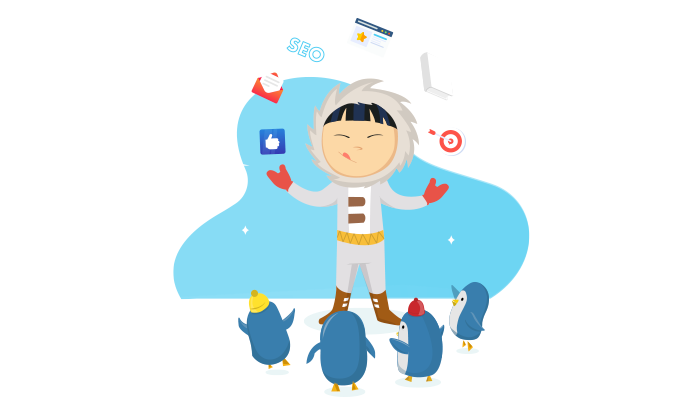
What is this miracle solution, exactly? How does it work? How to operate the three main levers of Inbound Marketing (SEO, blogging and social media) to get better results? These are the questions this article will endeavour to answer.
Inbound Marketing: Appeal to your Potential Customers!
Much more than a simple marketing methodology, Inbound Marketing is a means to give customers what they want instead of imposing what they don’t want. An inbound marketing agency can help you achieve this.
Traditional techniques often consist in looking for new clients using intrusive methods – such as cold calling to sell windows or insurances. These times are now behind us. Nowadays, customers want to look for a product, service, company or brand by themselves, without any form of coercion. Consumers are well informed and therefore more sophisticated and more volatile.
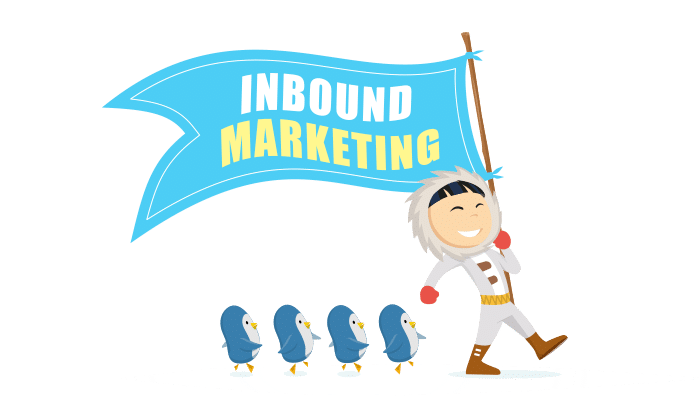
Inbound marketing puts the customer in charge. An inbound marketing strategy equates to attracting customers to come to you rather than pushing them your way. In essence, it’s like telling them: ‘We have the product or service you need, here’s why.’
All the secrets of Inbound Advertising are in this ‘why’. In how you will explain to your potential customers what you can do for them and why they should trust you.
The 3 Levers of Inbound Marketing
To achieve this, an inbound marketing agency utilizes three levers. In many ways, those are the pillars of your inbound marketing strategy:
- Search engine optimisation, to boost the visibility of your website’s pages, thereby attracting qualified traffic.
It works both as a starting point and as a means of consolidating your strategy: you need to make your website known before launching your Inbound Marketing strategy, and then your SEO work maintains the initial interest your content generated.
- Blogging: your Inbound Marketing agency uses this lever to present your services, offer Internet users valuable information and showcase your expertise (all while immensely benefiting your SEO strategy thanks to a selection of relevant keywords, hand-picked by your inbound marketing agency).
- Digital communication channels (emailing campaigns, social media publications, etc.), to make your brand and content known to the public, targeting as many people as possible.
An inbound marketing agency should essentially focus on those digital channels which make up the foundation of Inbound Marketing, though it is possible – and recommended – to use physical channels to complement an inbound marketing strategy (for instance, event).
What do the levers hinge on? They follow this pattern:
An inbound marketing strategy aims to write and publish diverse, high-value web content crafted to bring an answer to issues potential customers may have in order to build trust and to convert them into actual customers. It also helps make sure customers will remain loyal and talk about your brand, and thus send potential new clients your way, etc. Your inbound marketing agency will achieve this through SEO, which is a way to attract Internet users continuously.
This is what one could call the virtuous cycle of Inbound Marketing.
Inbound VS Outbound
Outbound Marketing defines all the methods which consist in reaching out to the lead to convince them to make a purchase. These methods include:
- Cold calling,
- Mainstream advertising (on TV, on the radio, in newspapers, in letter boxes…),
- Unsollicited email,
- Pop-up windows,
- Etc.
Marketers are good at working with images: they visually distinguish the two methods by using a megaphone to represent Outbound Marketing (to try and make your voice heard over all the commercial hubbub) and a giant magnet to represent Inbound Marketing (to attract potential customers naturally).
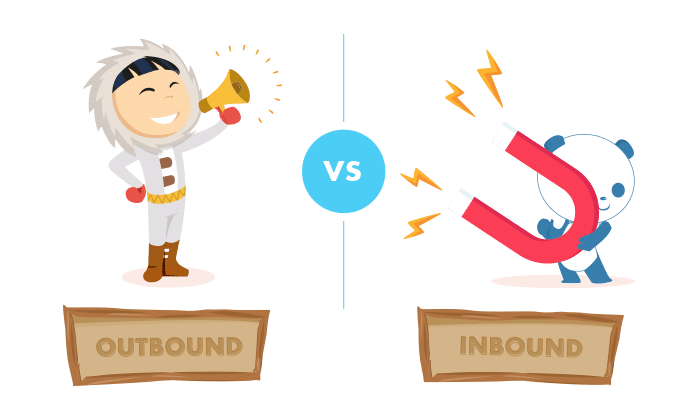
On the one hand, practices that do not consider what customers want or changes in their habits. And on the other hand, techniques that take the time to listen to potential customers to offer them what they need, when they need it through the right communication channel.
While outbound techniques mainly consisted in buying advertising space, Inbound Marketing cares about building customer value. There’s all the difference between an outbound and an inbound marketing strategy.
Why Inbound Marketing?
The idea of convincing the customer through added value rather than through intrusive advertising comes from marketer Peter F. Drucker. He wrote that ‘the aim of marketing is to know and understand the customer so well that the product or service fits him and sells itself’. In conclusion, he used the following sentence, in which resides all the spirit of Inbound Marketing: ‘Ideally, marketing should result in a customer who is ready to buy. All that should be needed then is to make the product or service available.’
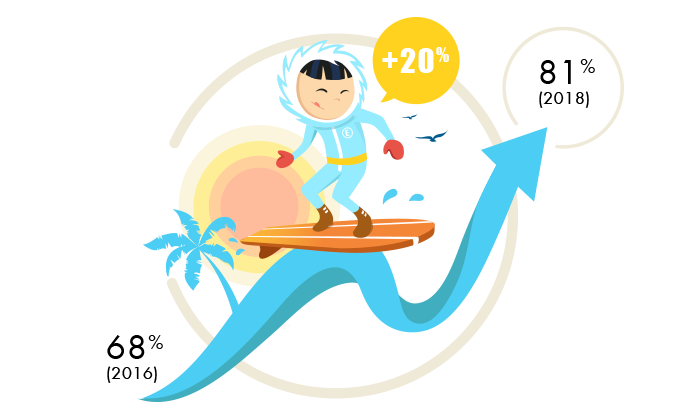
It would seem the development of the Internet provided the perfect ground for Inbound Marketing to build upon. According to a study by GE Capital Retail Bank[1] , in 2017, 81% of Internet users looked up on a product or service before making a purchase, 20% more than in 2016. Among them, 88% made their eventual purchase in a physical store.
Consumers have clearly become proactive: they spend an average of 79 days looking into an important purchase (vehicle, holiday trip, real estate…) before proceeding with it. Even more interesting: 60% of them start by consulting search engines to gather information and read customer reviews before going onto the company or brand’s website!
Inbound Marketing is quite simply the best way to be right where Internet users do their research (on Google, Bing and the like) to show them that your product/service is exactly right for them and to make sure that your marketing efforts lead to a customer who is ready to buy, to quote Peter F. Drucker.
The Conversion Funnel and Four Other Steps of Inbound Marketing
Attracting, convincing, converting… The purpose of Inbound Marketing is crystal clear but setting it up requires an inbound marketing agency to make several adjustments.
To deploy an Inbound Marketing Strategy and ensure its success, we use a ‘conversion funnel’ (which gets its name from the fact that it consists in bringing in a large number of Internet users from the top, only a small proportion of which will come out on the other end in the form of customers). This funnel is made up of four main steps which allow customer conversion and retention.
Step 1: Attracting
The first step of Inbound Marketing funnel conversion is dedicated to acquiring more traffic. These are the foundations of your inbound marketing strategy: setting up the tools that will attract Internet users and incite them to come visit your website.
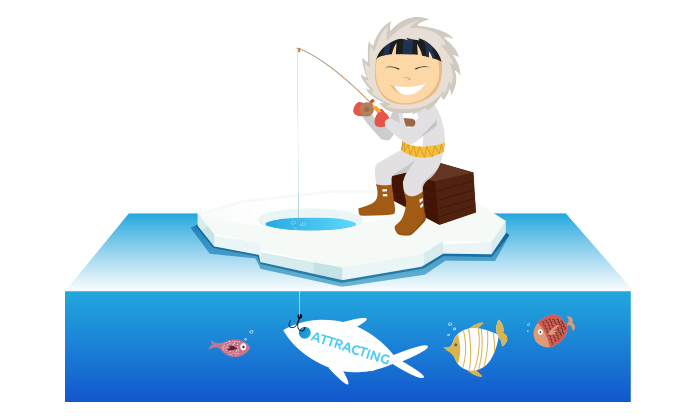
This is where the three levers mentioned above fully come into play:
- SEO optimizes the website’s pages so that they rank ideally in the search results.
This is the prerequisite to attract the attention of Internet users, 60% of whom use search engines to start researching their purchases. Note that the best focus for your SEO strategy is Google, as the latter captures almost 93% of market shares in United Kingdom.
- SEO optimisation utilizes many levers, but content is amongst the most important.
Here we are referring to two things: first, blogging, that is to say publishing quality content with a strong added value on your professional blog, making sure to select topics which pertain to issues your target audience is interested in by using keywords they are used to searching. Second, link building: obtaining external links pointing towards your website which boost your Ranking: a highly effective way to go up in SERP.
- Using active email addresses and social media is a way to broadcast content and attract more traffic.
You don’t need to put all your eggs in one basket: by deploying a multichannel Inbound Marketing Strategy, you ensure it will reach as many potential clients as possible. Once they arrive on your website, conversion work begins. Note that to create effect, emailing campaigns must be relevant and personalized; otherwise we’re back to Outbound Marketing!
PERSONA, DID YOU SAY PERSONA?
Behind this strange term is a very simple idea: a composite picture of your typical customer. If you take your client database, merge all the characteristics of your customers and segment them, you get personas.
These are used to help the Inbound marketing agency look for the right keywords, write the right content and communicate via the right channels. Personas are at the heart of any Inbound Marketing strategy: it’s a way to know your targets and to understand what they expect from you. It’s also the best way to generate prequalified traffic, which is easier to convert.
Step 2: Converting
Attracting traffic is not enough: all these visitors need to be convinced that your offer has added value. This is the objective of the second step in the Conversion Funnel of Inbound Marketing, which consists in converting potential customers into leads. To achieve this, your Inbound Marketing agency puts systems in place to get their information so you can get in touch with them easily: name, email address, phone number…
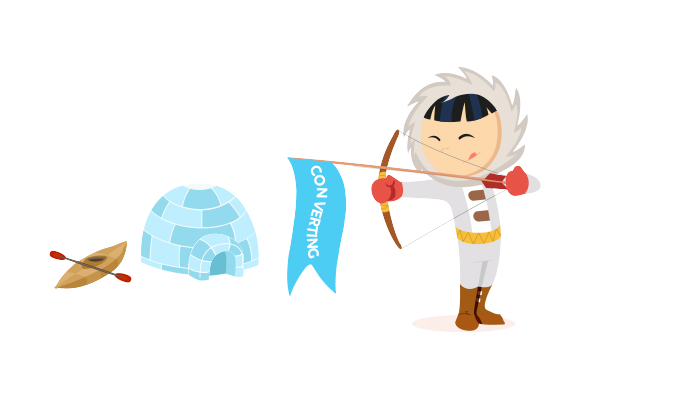
Such data collection is made possible thanks to three levers working in concert:
- CTA buttons
Which stands for ‘call-to-action’. These are buttons on which Internet users are encouraged to click through an action verb such as ‘Learn More’, ‘Download Now’, ‘Enter’, etc. These buttons stand out from the main body text and attract the visitor’s attention.
- Landing Pages
These are the pages on which Internet users ‘land’ when they click on CTA buttons. They usually contain a form (whose role is to collect the users’ personal data) and a link to content they can download.
- Forms
Which, when placed on various pages of your website (particularly on the contact page), allow users to give you their data so you can get in touch with them.
This step is easier to cover when potential customers are already partly qualified. If they arrive on your site with a clear idea of what they want, they will be more likely to give out their information. Conversely, if you’ve attracted them artificially (by publishing irrelevant content or by relying on less qualitative ad-based marketing strategies), you may lose them pretty quickly and end up with a very low conversion rate.
DATA IN THE ERA OF GDPR
Ever since the General Data Protection Regulation (GDPR) came into effect, any organization collecting and processing personal data needs to obtain their potential clients’ consent. A simple form isn’t enough: you need to inform Internet users as to how their data will be used, ask them to tick a dedicated box and be able to prove that they gave their consent freely and having been fully informed.
Long gone is the time of the ubiquitous pre-ticked box!
Step 3: Selling
The third step of the Inbound Marketing funnel certainly is the most complicated and potentially the longest. It consists in driving your leads down the funnel without losing touch, through regular emailing, offering various offers and content, until they become customers.
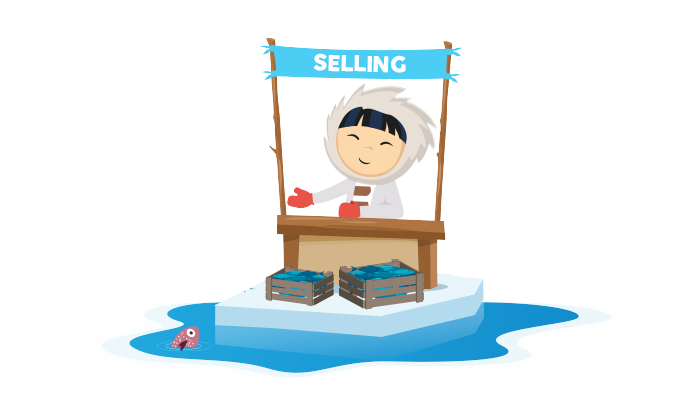
This phase could be compared to the way in which hens brood their eggs until they hatch, which is why it is referred to as ‘lead nurturing’.
All the difficulty resides in adapting your Inbound Marketing to the ‘buyer’s journey’ that corresponds to your industry. This phase is more or less time-consuming depending on whether you sell clothing, computer software or houses. The lead nurturing operation for a potential customer looking for a good pizza place in the vicinity cannot be compared with that of a lead considering purchasing a brand-new car. The process also varies based on the target: B2C or B2B.
Here are the levers you need to use to keep in touch throughout the process:
- Emailing
To send your leads messages based on a highly specific calendar. These messages should offer articles to read, premium content to download, even exclusive offers to speed up their decision-making process, or simply a newsletter to update them (on your current events, your products or services, etc.).
- CRM
To enter and treat collected data automatically. A good articulation between the CRM and the emailing solution allows you to send out personalized messages at the perfect moment, for instance on birthdays or for a special event.
- Lead Scoring
This method consists in assigning a score to each lead in order to assess how far down the conversion funnel they have progressed. That way, you can send them the right message at the right time. It goes hand in hand with a marketing automation solution.
- Marketing Automation
A tool (or tool set) that automatizes lead seduction tasks based on pre-programmed scenarios, such as sending emails or publishing messages on your company’s social media accounts. All that without staring at your computer screen 24/7.
THE HARMONIZATION OF SALES AND MARKETING
It’s an old dream: perfect harmony between the two strategic departments that are marketing and sales. Inbound Marketing is like the glue that holds these two entities together and makes them look towards the same goal. The marketing team gives the sales team hot leads, ready to become customers. 69% of the marketers who benefit from an excellent alignment claim to be able to give sales representatives higher quality leads (State of Inbound 2018).
Step 4: Retaining
You might say: alright, thanks to my inbound marketing agency’s work, we’ve turned the leads into customers, the consumers have made purchases, we’re at the end of the process. What more could we want?
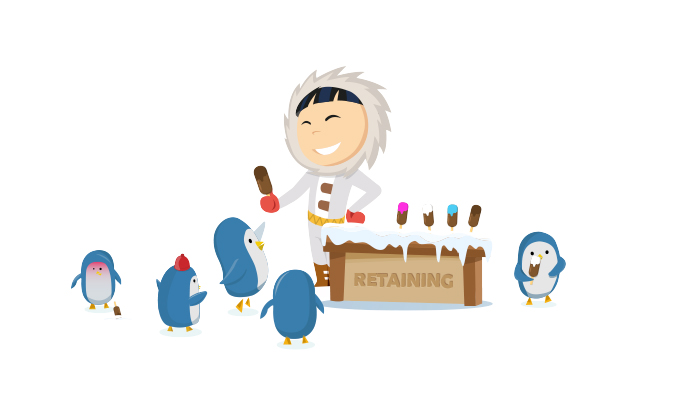
The answer is: loyalty and engagement.
This is the goal of the fourth step of an Inbound Marketing Funnel: keeping your customers close once their purchase journey comes to a close. To what end(s)?
- To increase turnover: 10% of a company’s customers represent about 90% of their profits.
- To save money: converting a customer is more expensive than retaining one.
- To improve your e-reputation: offering a positive experience so your customers tell others about you.
- To gain notoriety: your clients who are satisfied can become ambassadors of your company/brand, talk about you and bring in new leads to be sent through your Inbound Marketing Funnel.
Two things are necessary to achieve this: staying in touch with your customers on a regular basis even once they’ve made a purchase (by sending them newsletters or promotional offers, by asking them about their level of satisfaction, etc.), and encouraging them to promote you within their community (in essence, to become a brand ambassador).
INBOUND IS THE KING OF MARKETING
Inbound marketing possesses many virtues. It also has a powerful impact on ROI (Return on Investment): 65% of marketers claim that Inbound Marketing Strategies give them better ROI (State of Inbound 2018). Which is quite logical since you put actions in place which will continue to be fruitful even after conversion. A quality article doesn’t disappear once it’s been published: it continues to bring you notoriety for a long period of time.
Inbound marketing and SEO: two complementary approaches
Let’s end this presentation of Inbound Marketing by discussing the connection between its strategic approach when compared to that of SEO.
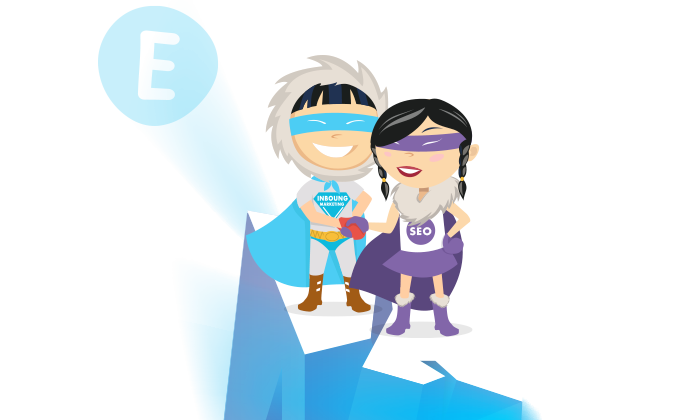
We noted that search engine optimisation was one of the three essential levers to attract quality traffic. However, their relationship goes well beyond that:
- SEO is a great way to attract more traffic in the long term, which feeds the Inbound conversion funnel continuously. Essentially, optimisation is like the engine that drives an Inbound Marketing Strategy.
- Content produced for SEO also showcases your expertise. Search engine optimisation needs high value-added content to encourage Internet users to click. This is also the very content that paints a positive picture for your company, which is useful in an inbound context.
- The keywords SEO campaigns focus on are paramount to understand your target audience better and define personas more precisely. In turn, these personas allow you to find more relevant keywords to boost optimisation. In an optimal inbound marketing strategy, both approaches complement one another perfectly.
- SEO and inbound marketing both contribute to the creation of strong foundations on which your notoriety will flourish. And these foundations are built to last!
In other words, the key to quality SEO also unlocks Inbound Marketing, and an Inbound Marketing Strategy cannot work correctly without the right measure of search engine optimisation!












